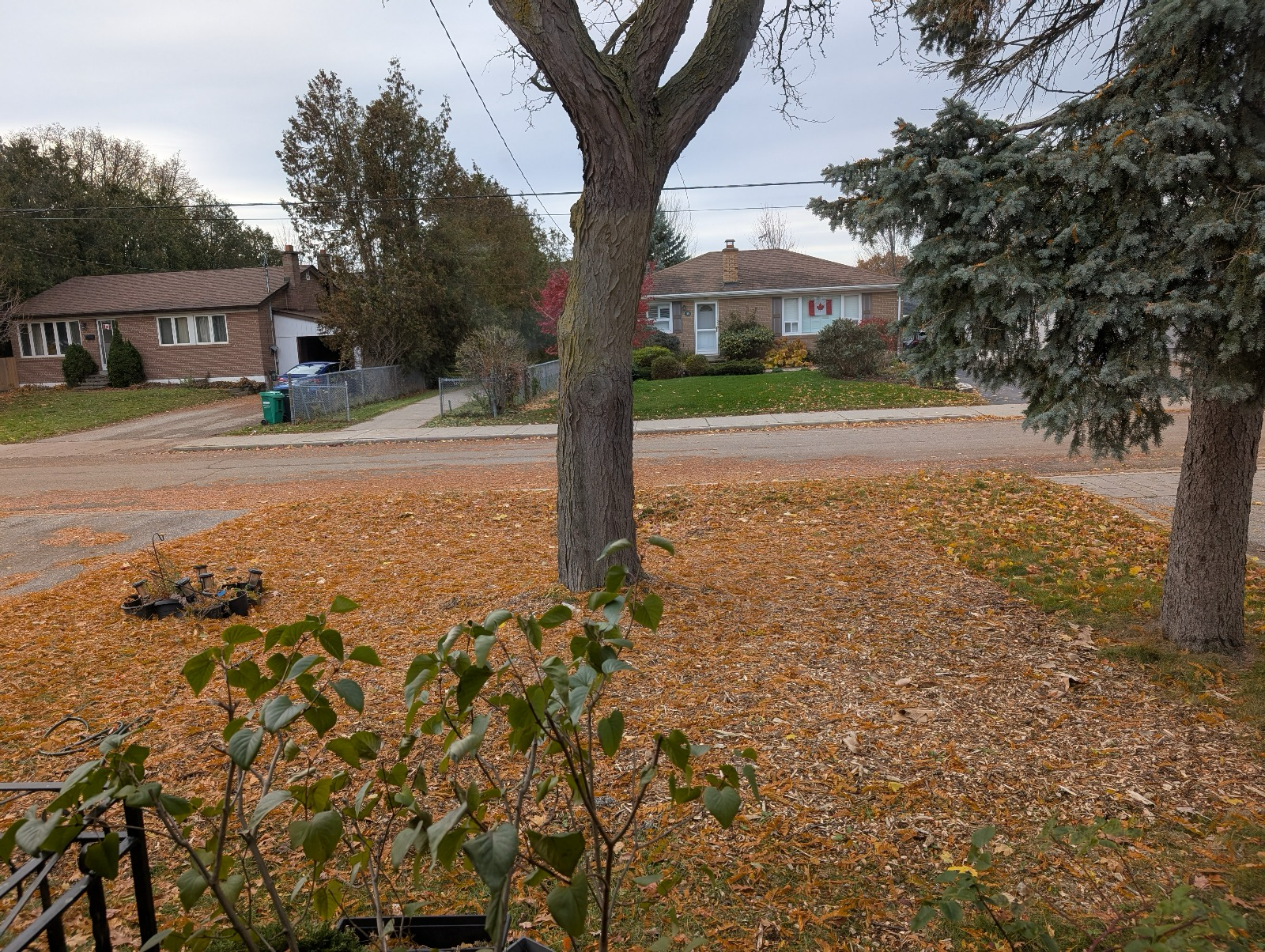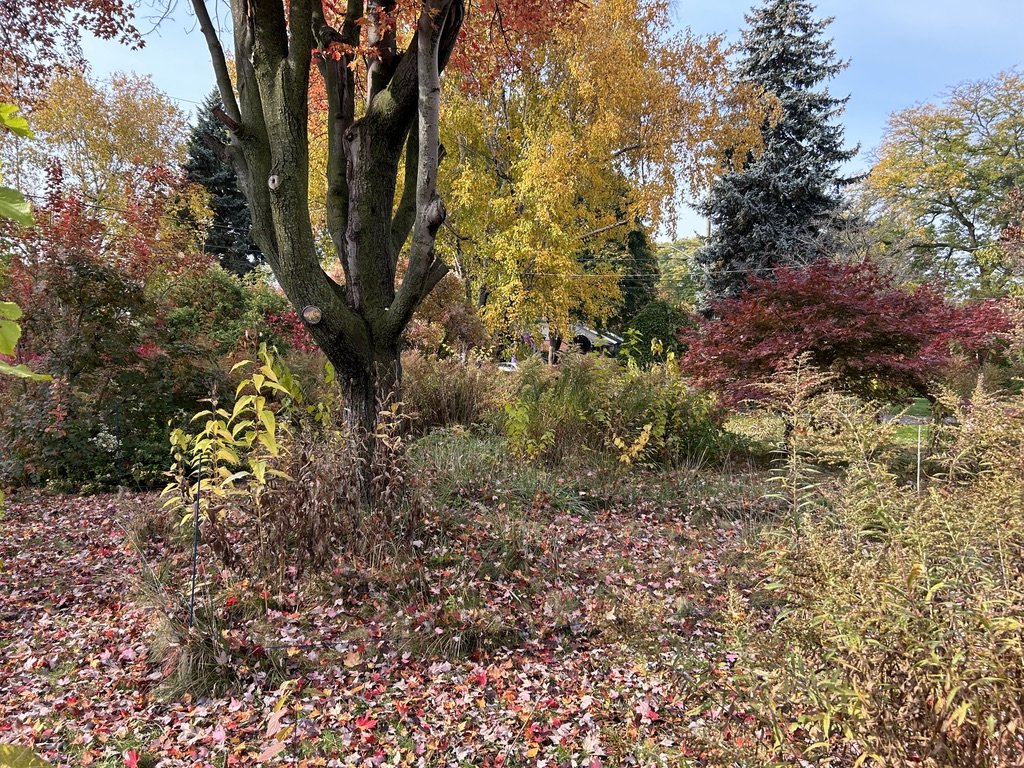There’s quite a contrast between Mississauga’s forward-thinking environmental policies and how some bylaws related to gardening are enforced on the ground.
Mississauga is a proud Bee City and has a Climate Action Plan that emphasizes protecting biodiversity. But take this example: a front yard where honey locust leaves have been left to enrich the soil, and mulch has been added to support overwintering pollinators and suppress weeds. The resident has already applied for a boulevard gardening permit for the spring, following all the appropriate steps. The boulevard area—technically the City’s right-of-way—is being managed with care and aligned with ecological best practices.
The City of Mississauga’s right-of-way extends from roughly the honey locust tree to the road.
Yet enforcement officers have ordered that the mulch be removed and replaced with turfgrass by early December (obviously, long past the sod-laying season in Ontario). Initial explanations for the order cited bylaws (the Property Standards bylaw and the Zoning bylaw) that don’t clearly address—or prohibit—mulch. Now, the Highway Obstruction By-law is being referenced as the reason for the order to remove the mulch, stating that boulevards can’t be “obstructed, damaged, encumbered, or fouled.” It’s hard to see how mulch used to prepare a native pollinator garden fits that description.
This situation highlights the need for greater clarity and alignment between municipal goals and enforcement. Supportive residents should feel empowered—not penalized—for contributing to a healthier urban ecosystem.
If you believe in nature-friendly cities, biodiversity, and evidence-based policy, please consider signing and sharing the David Suzuki Foundation’s Action Alert, and, if you live in Mississauga, contact your Councillor to support better by-law enforcement.
Pollinators need help—and so do the residents stepping up to protect them. Let’s align our bylaws with our biodiversity goals.
I posted the above text on various Facebook groups, and was surprised when one of the comments referred to a Mississauga Council decision from May, 2025. Digging into it, I found that none of this should have happened to the resident in the first place. On May 14, 2025, Council passed a motion ordering a pause in enforcement of bylaws related to landscape features within the public boulevard until staff had conducted a comprehensive review of various bylaws related to boulevard gardens. Yet another example of the misalignment between enforcement and the City’s stated goals/directives.
As this screenshot from the City of Mississauga’s website shows, Council passed a motion in May 2025 ordering a pause in precisely the sort of enforcement action that this resident has been subjected to.
One final irony. I’d been in touch with this resident before, about a year ago. At that time, she lived in a condominium, and the Condo Board was ordering her to make all kinds of changes to her garden. In the end, she decided to move to a place where she could cultivate a native plant pollinator garden in peace. No such luck.













